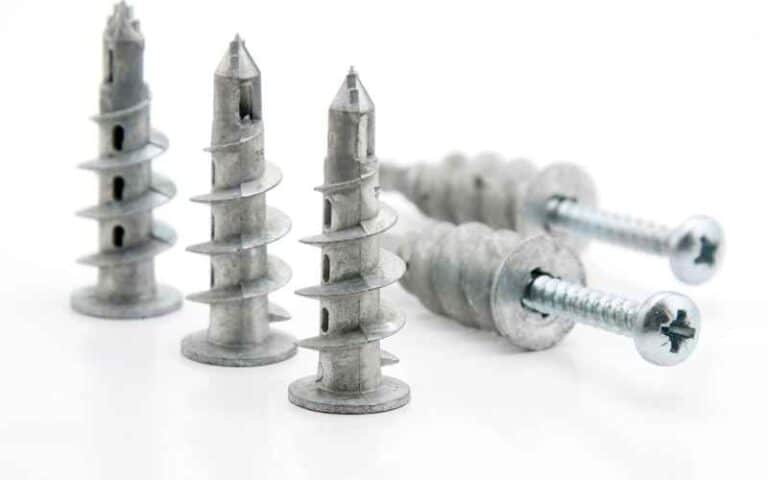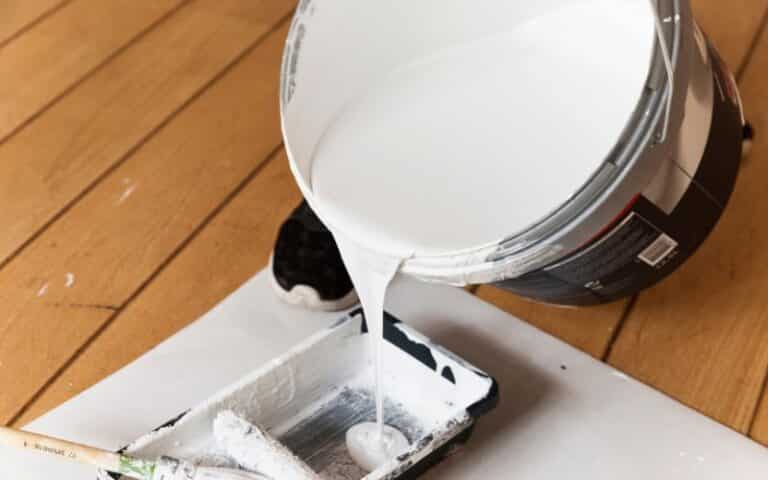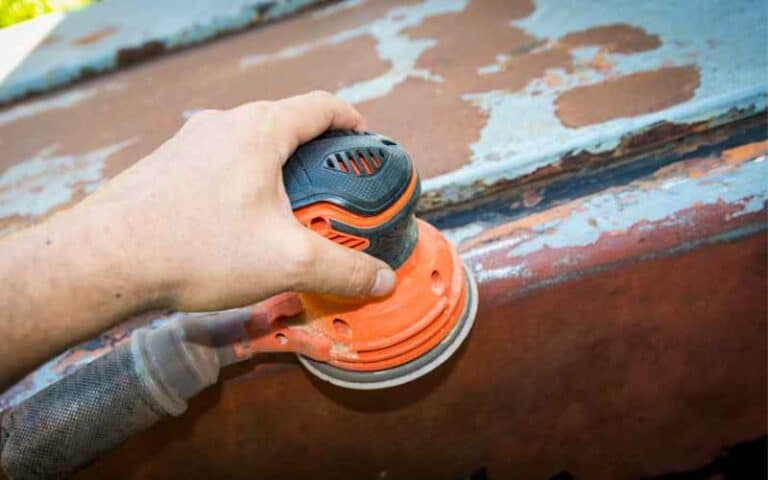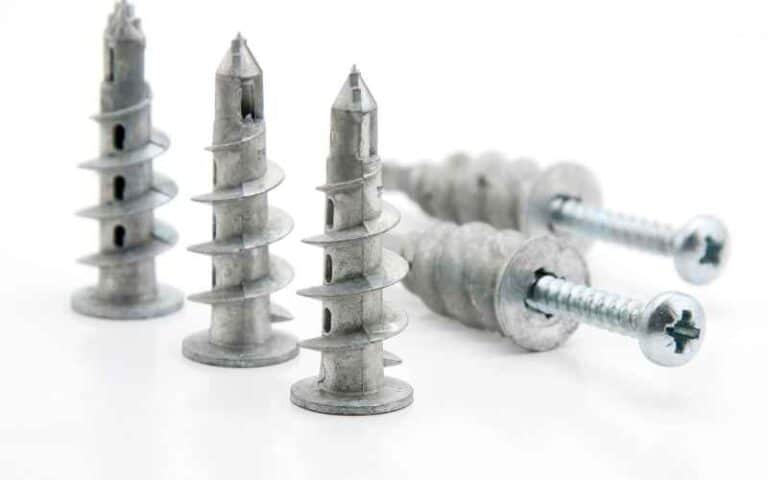When installing drywall, you may need to use thinset as an adhesive for tiling. The thinset will help create a bond between the tiles and the drywall.
The two main types of thinset are modified and unmodified drywall. Before tiling your painted drywall, you must know the best kind of thinset to use.
So, what types of thinset is best for painted drywall?
Modified thinset is best for painted drywall. It contains polymers and adhesives, ensuring a solid bond between the tiles and your drywall and providing minimal shrinkage. For the best results, you must prime your drywall before painting. Also, ensure to prepare your drywall correctly before beginning the tiling process.
In this article, I’ll make a detailed comparison between modified and unmodified thinset so you’d get to know which is best for you.
I’ll also give you some essential tips for applying thinset over drywall.
Ready for a Drywall Quiz?
Differences Between Modified and Unmodified Thinset

Here are some of the notable differences between modified thinset and unmodified thinset:
- Modified thinset contains polymers, while unmodified thinset does not.
- Modified thinset contains latex adhesives, while unmodified thinset does not.
- Modified thinsets are best for tiles and drywall. At the same time, an unmodified thinset is best for radiant floor heating and other types of flooring.
Should I Use Modified or Unmodified Thinset for Painted Drywall?
It would be best to use a modified thinset for your painted drywall. Modified thinset contains specific polymers and adhesives that unmodified thinset does not have.
These polymers and adhesives help ensure the drywall sticks better to the tiles. If you want the thinset to last much longer, prime your drywall before painting.
Modified thinset helps maintain minimal shrinkage of your painted drywall. Unmodified thinset is only necessary for installing flooring like radiant floor heating.
Are Modified Thinset More Durable on Painted Drywall?
Modified thinsets are more durable on painted drywall than unmodified thinset.
Here are some of the characteristics that make modified thinset more durable:
- Modified thinset contains polymers that help with moisture retention.
- Modified thinset has latex adhesive that facilitates increased bonding between drywall and tiles.
To ensure the durability of the modified thinset on your drywall, you must prime the wall before painting.
How to Primer a Drywall Before Thinset?
Here are steps on how to prime your drywall:
Step One
The first step is to choose a primer for your wall. It is best to purchase a primer with adequate moisture resistance.
Here is a list of some of the best water-resistant primers:
- INSL-X water-based bonding primer
- Rust-oleum 276087 mold-killing primer
- Zinsser Gardz problem surface sealer
Step Two
After choosing a waterproof primer, the next step is to prepare your drywall. Patch up the holes on your drywall with a joint compound.
When the joint compound dries, you should sand the wall. When sanding your drywall, you should cover up furniture to prevent stains.
You should also wear a dust mask to protect your lungs. Use a pole sander combined with 100-120 grit sandpaper for the sanding process.
Using the pole sander in a pull-and-pull motion is best, and then finishing up with 150-grit sandpaper.
Step Three
After sanding the drywall, clean up the dust with water, vinegar, or trisodium phosphate. Soak a sponge into the mixture and wipe the drywall until it cleans.
Leave the wall to dry for a few hours before proceeding to the next step.
Step Four
The final step is to apply the primer to your drywall. Dip a paintbrush or roller into your primer. You can use a paintbrush for smaller areas and a roller for larger sizes.
Ensure to prime the edges and corners carefully. Allow the primer to dry on the wall, then sand it with a fine-grit sandpaper.
Is It Cheaper to Use Unmodified Thinset on Painted Drywall?
No, it is not cheaper to use unmodified thinset on painted drywall.
In terms of cost of purchase, an unmodified thinset may be cheaper than a modified thinset, but it can cause you more expenses in the long run.
The unmodified bond thinset created on drywall is not strong enough because it does not possess the necessary adhesives.
The tiles may end up falling apart after a while then you’d have to spend more money on repairs. Modified thinset is relatively cheap, creating a bond that lasts very long.
Tips for Using Thinset Over Drywall
Here are some tips you need to be aware of to use thinset over your drywall efficiently:
#1. Mix the Thinset Properly
Before using thinset on your drywall, you must ensure to mix it properly. Wear a protective covering to avoid any hazards during the thinset mixing process.
Here is a table showing the materials you’ll need when mixing thinset:
| Tools/Materials | Uses |
|---|---|
| Mask or a respirator | To protect you from the silica dust in the thinset. |
| Eye protection and rubber gloves | To protect your eyes and skin from irritation caused by lime. |
| Bucket | To carry water and thinset |
| Electric mixing drill | Mix the thinset powder in water |
Here are steps on how to mix thinset for your drywall:
- Section out the bag of thinset powder into batches to get the best result.
- Fill a bucket with cool and clean water and pour a set of the thinset powder into it.
- Running the water before the powder helps to ensure that the thinset gets mixed thoroughly.
- Use an electric mixing drill at a low speed of about 300 rpm. Mix for about two to three minutes, then let the mixture slake for about five to ten minutes.
- Use a trowel on the mixture to test for consistency. Remix for about a minute to ensure that the combination is consistent enough.
#2. Prepare the Drywall Before Applying the Thinset
Here is a table showing the materials you’ll need to prepare your drywall before applying the thinset:
| Tools and Materials | Uses |
|---|---|
| Rubber gloves and safety glasses | Used as a protective covering |
| Trisodium phosphate | To wash your painted drywall |
| Dust mask | To shield you from the dust when sanding the wall |
| Water | To rinse the walls |
Here are steps on how to prepare your drywall before using thinset on it:
- Get a bucket and mix a gallon of warm water with a teaspoon of trisodium phosphate
- Soak a sponge into the mixture and then wash the drywall. Rinse the wall with clean water and allow it to air dry.
- Use 80-grit sandpaper to sand the wall after it dries.
- Finally, patch up the holes on the drywall if there are any. You’ll need a joint compound to patch up the gaps in your drywall.
#3. How to Prepare a Joint Compound?
Two joint compound types exist hot mud and premixed mud. The hot mud compound requires mixing before you use it, while the premixed mud comes ready to use
Here are steps to mix hot mud:
- You’ll need to buy buckets, drywall quick-set mud, and a mud mixing drill.
- Open up the drywall mud from the plastic bag to reveal its content.
- Pour out the contents into your bucket.
- Some drywall, like CGC, is dry. This is a good replacement for a quick set where it is unavailable.
- Add water into your bucket and break it down using a mixing drill.
- Hold down the bucket and spin the drill down the bucket.
- Pause between spins, working your way from the bottom up.
- Add water as you spin closer to the top to smoothen the mud.
- Once it is smooth, use it to prefill the joint.
Here are some other tips you need to know about using thinset over drywall:
- When using thinset on your drywall, avoid leaving air gaps.
- If you have an old sack of thinset, but you need to know if it’s still usable, you can test it by putting your finger into it. If it sticks to your finger, then it is viable for use.
- Always mix enough thinset at a time to prevent it from hardening in the bucket.
- Always add thinset powder into water and not water into thinset to ensure that the thinset gets mixed thoroughly.






